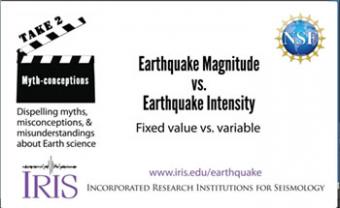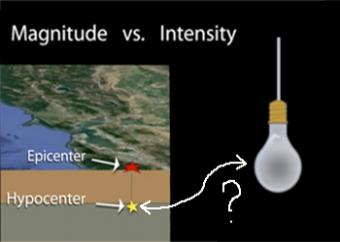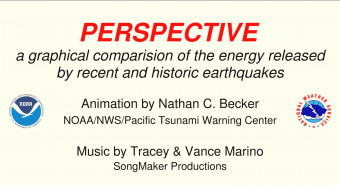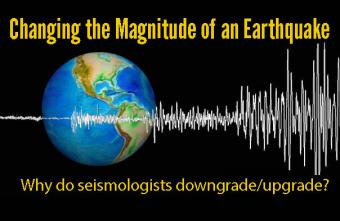
Is seismic intensity really different than an earthquake's magnitude?
Magnitude and intensity are both related to the size of an earthquake, but they each measure different aspects. Magnitude (which measures the energy released at the source of the earthquake rupture and is calculated using measurements from seismic instruments) is a single value. Seismic intensity(which is the measurement of the strength of shaking at a specific location determined from effects on people, human structures, and the natural environment) produces a range of shaking intensities in different locations.
In this animation we use a lightbulb as an analogy.
CLOSED CAPTIONING: A .srt file is included with the download. Use an appropriate media player to utilize captioning.
Intensity is mostly controlled by three factors: Magnitude: howbigwastheearthquake?

Earthquake intensity (what is felt during an earthquake at any given location) is often mistaken for earthquake magnitude (the instrumentally measured size of that earthquake). This animation describes the main factors that contribute to differing intensities using examples of earthquakes. Produced in collaboration with the U.S. Geological Survey.

This animation, created by NOAA's Pacific Tsunami Warning Center, graphically compares the relative "sizes" of some 20th and 21st century earthquakes by their moment magnitudes. Each circle's area represents its relative energy release, and its label lists its moment magnitude, its location, and the year it happened.

Why do seismologists change the magnitude of an earthquake? Obtaining an accurate preliminary magnitude can be difficult due not only to the complex processes that occur deep within the Earth, but because there are over a dozen techniques of for calculating the magnitude of an earthquake.
We encourage the reuse and dissemination of the material on this site as long as attribution is retained. To this end the material on this site, unless otherwise noted, is offered under Creative Commons Attribution (CC BY 4.0) license